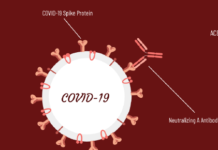Chronic Inflammatory Immune Demyelinating Sensory Polyradiculoneuropathy, ever heard of it? If you haven't, you are not alone. It’s a very rare disease and my aunt, Julie Foster, is one of the handful of people diagnosed with this condition.
“I was only the eighth person diagnosed at that time,” she tells SciJourner. “I was relieved to have a diagnosis and sad that there was no cure.”
Chronic Inflammatory Immune Demyelinating Sensory Polyradiculoneuropathy (CISP) is considered an orphan disease. An orphan disease is defined by U.S. law as a disease that affects less than 200,000 Americans and research on treatments is not considered cost-effective. Many orphan diseases are genetic, which can make them very challenging to study, let alone treat, according to the BC Biolibrary network. Experts estimate there are over 5,000 of such rare disorders.
For Foster and others suffering from a rare disorder, February 28, 2010 was a special day. The United States’ National Organization for Rare Disorders, partnering with a European counterpart, observed Rare Disease Day. The special day was first observed in Europe in 2008 and is designed to strengthen collaborations within the rare disease community and raise awareness.
A 60-foot chain featuring the names of more than 350 rare diseases with no ongoing clinical trials was displayed in the main lobby of Children's Hospital Boston for the week leading up to Rare Disease Day. Other organizations, including the Global Genes Project, Lundbeck Inc., and BioMarin Pharmaceutical Inc., held their own events in support of National Rare Disease day.
Climber Cindy Abbot went as far as scaling Mount Everest to call attention to her rare disease, Wegener's granulomatosis, and raise money for research. Abbot’s disease causes inflammation of blood vessels, restricting blood flow and damaging kidneys, lungs and other organs.
To encourage cures for rare diseases, the Orphan Drug Act went into effect in the US in 1983. Of the 5,000 diseases like Foster’s CSIP that are covered under the act, 47% affect fewer than 25,000 people. As of April 2009, 339 drugs and biological products for rare diseases have been marketed since the law passed, according to the Food and Drug Administration’s Office of Orphan Products Development.
When Foster is asked why she wears leg braces, uses a cane, and operates her car by hand controls, she gets a chance to talk about her rare disease, CISP.
“I first noticed in 1995 that I was not as coordinated as I used to be. I attributed it to getting older; though, I didn’t think of 35 as older”, says Foster.
Two years later, she noticed her left little toe and a spot on her left hip were numb. That’s when she decided she needed to see a doctor about these puzzling symptoms. But getting the right diagnosis would prove to be a difficult, eight-year endeavor. The neurologist she saw believed she had a nerve injury and it would take some time, but it would heal and get better. As Foster recalls, “it never got better. In fact, it got worse.”
Over the next three years, several more specialists gave her a diagnosis of diabetic peripheral neuropathy. Foster, who has a bachelors of science degree in nursing and is a registered nurse, disagreed. “I was taking an oral medication that kept my diabetes in very good control and had no other complications that could be attributed to diabetes.” She went home and continued to do research on her own.
Foster’s symptoms progressed to include loss of feeling in her feet, the perineum, and areas on both hip, as well as bladder incontinence. An MRI revealed a bulging disc in her spine. “Surely, this was the source of all my problems,” said Foster. Back surgery in February, 1999, resulted in improvement in the bladder symptoms, but the sensory issues remained unchanged.
By 2000, the numbness had progressed to both her legs and up to her navel, as well as some numbness in her fingers that would come and go.
“My symptoms had progressed to the point I was twisting my ankles and falling with virtually any walking, and I was having problems finding the gas and brake pedals on my car. I managed to barely avert running through the back of my garage one day,” remembers Foster. She was prescribed ankle-foot braces and forearm crutches, and her car was outfitted with hand controls that operated the brakes and accelerator.
She grew frustrated with her disability and began to struggle with depression, but vowed to continue working despite doctors suggesting she go on permanent disability. Unable to work as a floor nurse, she had taken an administrative job at a hospital.
Throughout this period, the single mother relied more and more on her young daughter, Angela. “At the age of 11, she was bringing in all the groceries, carrying things for me, making my bed, helping me up when I fell, and helping clean up when I had accidents. There were many times I think I would have given up without her,” says Foster.
By 2003, she had made adaptations and was functioning somewhat better; however, she still didn't have what she believed to be the right diagnosis. She ended up back in the office of the neurologist she had seen in 1997.
“After seeing my deterioration and reviewing my testing, he said he thought I had an immune-mediated inflammatory polyneuropathy,” says Foster. He referred her to the Mayo Clinic in Rochester, Minnesota.
After two days of seeing physicians and undergoing testing, the Mayo’s specialists made the diagnosis of CISP. “I finally had what was the correct diagnosis; however, there was no cure, limited therapy, and I would probably never know why I got the disease,”, says Foster.
“I am grateful for all the things I can do, and sad sometimes about all those that I can't.” she adds. “I pray that my child, my nieces, and my nephew will not be hit with this disease, and that someday there will be a treatment that works for everyone.” Bailey Lovell

This work is licensed under a Creative Commons Attribution-NonCommercial-NoDerivs 3.0 Unported License














Excellent article. Good information.
As someone with an orphan disease, I feel your article did an excellent job capturing the logistical and personal difficulties associated with orphan diseases. I LOVED the close of your article. I think after the journey of diagnosis, lack of treatment options, and acceptance is the hope advances in medicine might help future generations.
I was diagnosed at Mayo Clinic also. However the diagnosis says with Ataxia.
I was not absorbing Vit E. Ultimately all the fat soluable vitamins except for Vit K (5mg) which I have taken for over 30 years do to massive hemorrhaging. I take Liqui-E and ADEK’s vitamins. I’ll never, never give up.